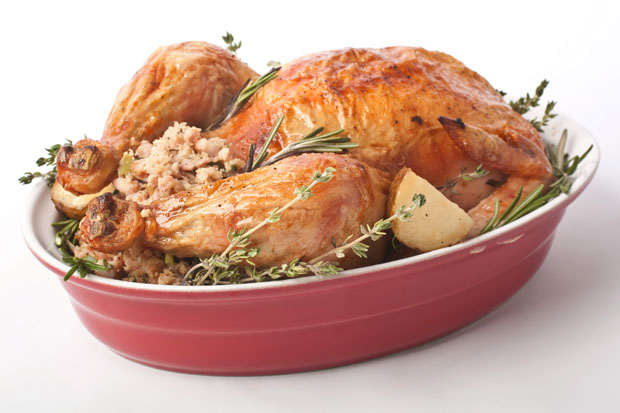Holiday Superstars
13 Nov 2015
These holiday food favorites are surprisingly good for you
By Edna Cox Rice, RD, CSG, LD

The holiday season tends to begin with Halloween and lasts through New Year’s. This celebrating lasts almost three months. The weeks are filled with food, fun, festivities, and more food.
It seems there’s no escaping the calories! In an effort to save our waistlines, we often focus on what not to eat during the holidays. What happens then? We feel deprived and rather than enjoying a few holiday favorites, we over indulge, eating even more goodies. After all the holidays are only once year!
Many of our favorite holiday foods are nutritional superstars. By focusing on these nutritional powerhouses you can feel good about feasting on foods that delight your senses while celebrating holiday traditions.
Pumpkin – it’s not just for pie anymore. Creative chefs use pumpkin in soup, hummus, and breads. This veggie is not only packed with flavor and color, it is a rich source of heart healthy fiber, Vitamins A and C. Pumpkin seeds provide healthy fats – the monounsaturated and polyunsaturated fatty acids. The seeds are great toasted or mixed with nuts and dried fruits for a heart healthy holiday snack. Pumpkin itself is low in calories. No holiday is complete without pumpkin pie. Give your pumpkin pie a healthy twist by using egg substitute; fat-free evaporated milk; increase the cinnamon and nutmeg and decrease the sugar; make a crust from scratch that contains no trans-fats.
Turkey is a dieter’s dream food – it fills you up when you eat just a little, unless it’s deep fried or slathered with gravy. It is an excellent protein source and offers less fat per serving than other meats. A serving of turkey provides the recommended daily allowance of folic acid and is a good source of Vitamin B, zinc, and potassium. All of these nutrients help to lower cholesterol levels, protect against heart disease and cancer, and boost the immune system. A healthy serving size is 3 – 4 ounces. Eating the white meat without the skin saves several hundred calories per serving. Be creative in using leftover turkey; make a healthy turkey and cranberry sandwich.
Cranberries, prepared in sauces or relishes, are the perfect garnish for turkey and stuffing. Not only do they add color and a sweet taste, they’re loaded with disease-fighting antioxidants. The fiber in cranberries helps lower LDL or the “bad” cholesterol levels. Use cranberries in jellies, sauces, relishes, and holiday beverages. Cranberries are naturally sweet, so try cutting the sugar in your recipes or using a sugar substitute to save on calories. With cranberry sauces or relish, a little goes a long way.
Sweet Potatoes are among the healthiest vegetables if they are baked or roasted and not candied. This vegetable comes in a variety of colors, from yellow to dark orange to reddish purple. These brightly colored vegetables are full of fiber, vitamins A and E, potassium and phytochemicals. These nutrients help to stave off aging, cancer, and arthritis. Sweet potatoes can be used as an ingredient in hummus, spicy soup, or individual sweet potato and apple soufflés.
The lowly Green Bean is not as glamorous as many other veggies, but appears as one of the usual suspects during most holiday meals. Surprisingly, this bean is one of the healthiest holiday foods out there. Green Beans are rich sources of Vitamins A, C, and K, potassium, folate and dietary fiber. Garnish steamed green beans with slivered almonds and add more nutrients for a low calorie dish that provides 50 calories or less per serving.
Collard Greens, a Carolina favorite and a must-have on New Year’s Day, are ultra-healthy sans seasoning with ham or pork fat. Collards are full of nutrients – Vitamins A, C, and E, potassium, magnesium, and calcium. They have properties that boost immunity, promote good vision, and protect against cancer. For the most nutrients and least calories per serving, keep the preparation simple – prepare in a steamer, or sauté with olive oil.
Pecans, among all the nuts, score the highest in antioxidant ranking. And they rank second in omega 3 fat content, right behind walnuts. Pecans have a long association with favorite southern desserts like pecan pie and pralines. Pecans alone, minus the sugar and fat of those desserts, add fiber and vitamin E to your diet. A handful of pecans daily reduces your overall risk of heart disease. The unsaturated fat in pecans helps to reduce cholesterol levels, especially LDL (“bad”) cholesterol levels. Enjoy your toasted pecans by tossing with olive oil and cinnamon. Add a little chipotle flavoring for a healthy sweet and spicy treat.
Cinnamon and Nutmeg are favorite spices of the season. Just the smell or taste of these spices stimulate warm holiday memories. More and more research is being conducted on the health benefits of spices. Cinnamon is one of the top Five spices on the antioxidant chart. Cinnamon has been associated with improving insulin activity and lowering blood glucose levels. The nutty, earthy flavor of nutmeg mixes well into fruit and vegetable recipes, helping to reduce or eliminate the need to add sugar and fat to dishes. Cinnamon helps to boost the flavor profile and reduce the sugar content in desserts. Both spices enhance flavor and save calories in holiday favorites.
Sage, Rosemary, and Thyme are used in many stuffing, dressing or meat dishes during the holidays. Fresh herbs brighten the flavor of everything from soup to desserts. Less acknowledged is their nutritional value. The aromatic leaves offer potent doses of antioxidants and vitamins. These three herbs have anti-inflammatory and healing properties. Eat them regularly to enhance a healthy diet that helps protect against cancer and heart disease.
Red Wine is naturally heart healthy. Wine and cocktails can add needless calories to an already over-the-top meal, although wine does have redeeming heart healthy properties in exchange for its calorie count. Red wine provides the most antioxidant bang for your calorie. Red wine gets its color from grapes with red and purple skins. These skins are a rich source of antioxidant flavonoids and phenolics. Resveratol, found in grape skins and seeds can help boost HDL (“good”) cholesterol. A 5-ounce serving is about 100 calories. Try a spritzer to save on calories – half wine, half calorie-free seltzer water.
Savor the best! The best scents, tastes, and foods of the season. They are all part of our holiday traditions, our holiday memories. Instead of counting calories, count your family and friends. And most of all, count your blessings!
For healthy holiday recipes visit these websites: cookinglight.com; drgourmet.com; cnconweb.com.











